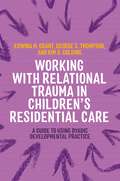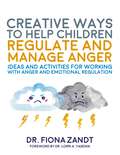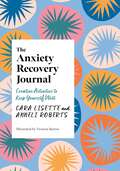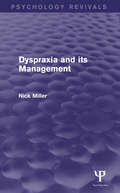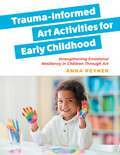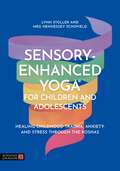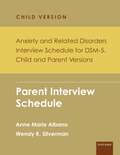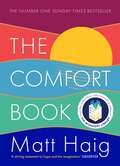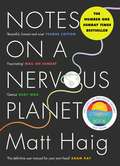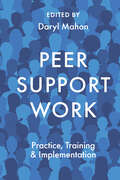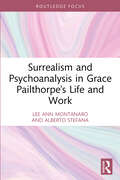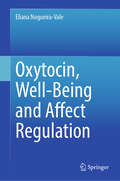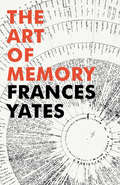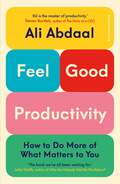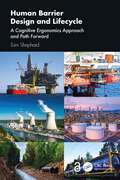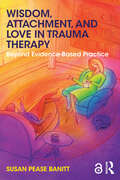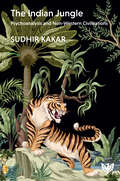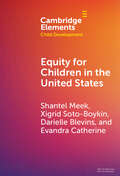- Table View
- List View
Working with Relational Trauma in Children's Residential Care: A Guide to Using Dyadic Developmental Practice (Guides to Working with Relational Trauma Using DDP)
by Kim S. Golding George Thompson Edwina GrantDyadic Developmental Psychotherapy (DDP) is a therapeutic approach, based in attachment theory, which is used to support children who have experienced relational trauma. By consciously offering PACE (playfulness, acceptance, curiosity, and empathy), adults can help children - and each other - to feel more secure and open to others. This guide provides an overview of DDP and explores how it can be used to support children in residential care settings. Case studies, examples, and expert guidance from the authors' extensive experience demonstrate how to apply the principles of DDP to daily practice. From integrating the PACE model into conversations - both with children and colleagues - to balancing physical safety with relational safety in secure care situations, this book offers a way to build a culture of support throughout the whole structure of residential care settings.
Creative Ways to Help Children Regulate and Manage Anger: Ideas and Activities for Working with Anger and Emotional Regulation
by Fiona ZandtSupport children to better understand and manage their anger with this practical guide of therapeutic activities. From exploring a child's first steps in therapy to helping parents and carers with their responses, this book provides practical advice for working with children aged 4-12 and families navigating issues of anger and emotional regulation.The book includes over fifty playful, practical, and purposeful activities to use in therapy. Grounded in theory and research around anger in children, the activities include clear therapeutic rationales for practitioners, considerations for older and younger children, suggestions for the inclusion of parents and carers, and adaptations for online practice. This is the ultimate tool for therapists looking to develop their clinical practice with creative ways to help children manage their anger.
The Anxiety Recovery Journal: Creative Activities to Keep Yourself Well (Creative Journals for Mental Health)
by Cara Lisette Anneli RobertsThe Anxiety Recovery Journal is designed to support you in managing your feelings of anxiety. Drawing on evidence-based techniques, such as CBT, and on the authors' professional and lived experience, it features helpful journaling prompts, creative activities, beautiful colouring pages and motivational quote pages to help you calm your anxious mind.This uplifting journal will help you better understand your experiences of anxiety and motivate you in your recovery journey. Created by CBT therapist Cara Lisette and mental health advocate Anneli Roberts, the activities in this journal will help you to take positive steps towards living a full life beyond your anxiety.
Creative Ways to Help Children Regulate and Manage Anger: Ideas and Activities for Working with Anger and Emotional Regulation
by Fiona ZandtSupport children to better understand and manage their anger with this practical guide of therapeutic activities. From exploring a child's first steps in therapy to helping parents and carers with their responses, this book provides practical advice for working with children aged 4-12 and families navigating issues of anger and emotional regulation.The book includes over fifty playful, practical, and purposeful activities to use in therapy. Grounded in theory and research around anger in children, the activities include clear therapeutic rationales for practitioners, considerations for older and younger children, suggestions for the inclusion of parents and carers, and adaptations for online practice. This is the ultimate tool for therapists looking to develop their clinical practice with creative ways to help children manage their anger.
Dyspraxia and its Management (Psychology Revivals)
by Nick MillerDyspraxia is a disorder of voluntary, purposeful, learned movement and is one of the most common sequelae of stroke, head-injury, neoplasm and abnormal ageing. It is also a major complicating factor in the assessment and treatment of acquired language, visual-spatial and other movement disorders. Dyspraxics are found not only in specialist neurological units, but also in rehabilitation centres, general medical and surgical wards, geriatric units and in the community. Despite this there was little systematic discussion of dyspraxia in major texts on stroke, head injury, rehabilitation or movement disorders at the time. Originally published in 1986, one aim of this book was to correct the imbalance in the attention paid to the disorder.The emphasis of the book is practical, dealing with the recognition and assessment of dyspraxic dysfunction, and guidelines and issues in its remediation. Theoretical issues are covered in relation to their bearing on clinical management. It was the standard textbook on the topic for many years and directly relevant at the time to clinicians in the fields of clinical psychology, occupational therapy and physiotherapy, speech therapy, neurology and geriatrics.
Dyspraxia and its Management (Psychology Revivals)
by Nick MillerDyspraxia is a disorder of voluntary, purposeful, learned movement and is one of the most common sequelae of stroke, head-injury, neoplasm and abnormal ageing. It is also a major complicating factor in the assessment and treatment of acquired language, visual-spatial and other movement disorders. Dyspraxics are found not only in specialist neurological units, but also in rehabilitation centres, general medical and surgical wards, geriatric units and in the community. Despite this there was little systematic discussion of dyspraxia in major texts on stroke, head injury, rehabilitation or movement disorders at the time. Originally published in 1986, one aim of this book was to correct the imbalance in the attention paid to the disorder.The emphasis of the book is practical, dealing with the recognition and assessment of dyspraxic dysfunction, and guidelines and issues in its remediation. Theoretical issues are covered in relation to their bearing on clinical management. It was the standard textbook on the topic for many years and directly relevant at the time to clinicians in the fields of clinical psychology, occupational therapy and physiotherapy, speech therapy, neurology and geriatrics.
Trauma-Informed Art Activities for Early Childhood: Using Process Art to Repair Trauma and Help Children Thrive
by Anna ReynerWhy Art & Trauma? By making their own choices as they engage in sensory art experiences, children gain confidence, release stress, express emotions, and develop critical-thinking skills. Art offers a unique opportunity for children to safely experiment with the physical world and re-wire their brains to reduce the negative effects of trauma, all while learning to identify as creative thinkers. This highly illustrated and easy-to-use resource supports trauma-informed work with children ages 3-8. It delves into both the theory and practice of therapeutic art and includes 21 original art lessons and 60 art techniques, all presented visually for ease of use. Both text and illustrations demonstrate how to create a safe, non-retraumatizing environment for children to experience safety, connection and calm. Ideal for implementing into classroom environments, including preschools, kindergarten, early primary grades, afterschool programs, child counselling centers and community-based youth programs, this professional resource is perfectly adaptable for a variety of educational and therapeutic contexts.
Sensory-Enhanced Yoga® for Children and Adolescents: Healing Childhood Trauma, Anxiety, and Stress Through the Koshas
by Lynn Stoller Meg Hennessey SchofieldThis evidence-based and trauma-informed resource allows professionals working with children and teens to apply sensory yoga as a holistic and effective tool in addressing symptoms of trauma, toxic stress, anxiety, depression, and related mental health conditions.Based on the Sensory and Mindfulness-based Yoga for Learning Environments (SMYLE™) model, this training program can easily be adopted by a wide range of professionals and applied to various settings, including schools, yoga classes, community centres, and group homes.In reducing stress, emotional dysregulation, and symptoms of hypervigilance and trauma, children and teens are able to benefit from a maintained state of calm and focus, and a heightened sense of self-worth and empowerment allowing for the long-term development of consistent healthy habits and routines.
Anxiety and Related Disorders Interview Schedule for DSM-5, Child and Parent Version: Parent Interview Schedule - 5 Copy Set (PROGRAMS THAT WORK)
by Anne Marie Albano Wendy K. SilvermanThe Anxiety Disorders Interview Schedule for DSM-5, Child and Parent Versions, are the gold standard semi-structured interviews used in clinical research and services to assess and diagnose the major mental health conditions affecting children, adolescents and young adults. These interviews cover the range of conditions identified in the Diagnostic and Statistical Manual of Mental Disorders (DSM), while also providing information for careful case formulation in treatment planning and evaluation of outcomes. Evaluators are able to quantify the severity of illness using a Clinician Severity Rating (CSR), as well as level of severity of symptoms and associated avoidance behavior. Decision rules for combining parent and youth reports, examples of CSR levels for the child anxiety triad of separation anxiety disorder, social anxiety disorder, and generalized anxiety disorder are included in the Clinician Guide. Price is for a set of 5 Parent Interview Schedules.
Anxiety and Related Disorders Interview Schedule for DSM-5, Child and Parent Version: Parent Interview Schedule - 5 Copy Set (PROGRAMS THAT WORK)
by Anne Marie Albano Wendy K. SilvermanThe Anxiety Disorders Interview Schedule for DSM-5, Child and Parent Versions, are the gold standard semi-structured interviews used in clinical research and services to assess and diagnose the major mental health conditions affecting children, adolescents and young adults. These interviews cover the range of conditions identified in the Diagnostic and Statistical Manual of Mental Disorders (DSM), while also providing information for careful case formulation in treatment planning and evaluation of outcomes. Evaluators are able to quantify the severity of illness using a Clinician Severity Rating (CSR), as well as level of severity of symptoms and associated avoidance behavior. Decision rules for combining parent and youth reports, examples of CSR levels for the child anxiety triad of separation anxiety disorder, social anxiety disorder, and generalized anxiety disorder are included in the Clinician Guide. Price is for a set of 5 Parent Interview Schedules.
The Comfort Book: The instant No. 1 Sunday Times bestseller
by Matt Haig*MATT HAIG’S NEW NOVEL THE LIFE IMPOSSIBLE IS AVAILABLE TO PRE-ORDER NOW * THE INSTANT NUMBER ONE SUNDAY TIMES BESTSELLER 'Profound, witty and uplifting' Observer 'Full of eloquent, cogent and positive reminders of the beauty of life' Independent The Comfort Book is a collection of consolations learned in hard times and suggestions for making the bad days better. Drawing on maxims, memoir and the inspirational lives of others, these meditations offer new ways of seeing ourselves and the world. This is the book to pick up when you need the wisdom of a friend, the comfort of a hug or a reminder that hope comes from unexpected places.
Notes on a Nervous Planet
by Matt Haig*MATT HAIG’S NEW NOVEL THE LIFE IMPOSSIBLE IS AVAILABLE TO PRE-ORDER NOW * Order THE COMFORT BOOK. Available now! THE NUMBER ONE SUNDAY TIMES BESTSELLER The world is messing with our minds. Rates of stress and anxiety are rising. A fast, nervous planet is creating fast and nervous lives. We are more connected, yet feel more alone. And we are encouraged to worry about everything from world politics to our body mass index. – How can we stay sane on a planet that makes us mad? – How do we stay human in a technological world? – How do we feel happy when we are encouraged to be anxious? After experiencing years of anxiety and panic attacks, these questions became urgent matters of life and death for Matt Haig. And he began to look for the link between what he felt and the world around him. Notes on a Nervous Planet is a personal and vital look at how to feel happy, human and whole in the twenty-first century.
Peer Support Work: Practice, Training & Implementation
by Daryl MahonAs health and social care policy evolves, peer support is an increasingly recognised method to help improve the outcomes of care by drawing on those with lived experience. However, despite the establishment of a research basis that demonstrates the methods’ value in care, implementation of lived experiences of peers in practice contexts faces difficulties. To aid the progress of peer support care, Peer Support Work highlights the experiences of contributors who work or study social care and have lived experience with mental health, substance use, homelessness, criminal justice, and migration. Beginning with the historical context of peer support and moving through the practical implementation of peer support into policy and organizational contexts, this innovative title draws on the contributors’ collective experiences, supported by rigorous academic research, to distil the outcomes, benefits, training and implementation challenges within this emerging practice and research context. Researchers interested in moving the field forward will benefit from this comprehensive analysis of the existing research on peer support work. The input from contributors with lived experience makes this unique title an excellent resource for policymakers in addition to academics.
Peer Support Work: Practice, Training & Implementation
by Daryl MahonAs health and social care policy evolves, peer support is an increasingly recognised method to help improve the outcomes of care by drawing on those with lived experience. However, despite the establishment of a research basis that demonstrates the methods’ value in care, implementation of lived experiences of peers in practice contexts faces difficulties. To aid the progress of peer support care, Peer Support Work highlights the experiences of contributors who work or study social care and have lived experience with mental health, substance use, homelessness, criminal justice, and migration. Beginning with the historical context of peer support and moving through the practical implementation of peer support into policy and organizational contexts, this innovative title draws on the contributors’ collective experiences, supported by rigorous academic research, to distil the outcomes, benefits, training and implementation challenges within this emerging practice and research context. Researchers interested in moving the field forward will benefit from this comprehensive analysis of the existing research on peer support work. The input from contributors with lived experience makes this unique title an excellent resource for policymakers in addition to academics.
Surrealism and Psychoanalysis in Grace Pailthorpe's Life and Work
by Lee Ann Montanaro Alberto StefanaThis book outlines the life and intellectual thought of the English surrealist artist and psychoanalyst, Dr Grace Pailthorpe (1883–1971). It gathers her published and unpublished writings, providing an in-depth study of the importance of Surrealism in her work and legacy.Pailthorpe’s theoretical understanding of the psyche informed her approach to art, setting her work apart from other Surrealist artists by unifying artistic, scientific, and therapeutic aims. Pailthorpe considered Surrealism to be a method of investigation into unconscious mental life and believed that it was essential that the repressed part of our minds should find expression. Her theories were influenced by personal and professional experiences such as her work with female offenders, her psychoanalytic training, and her research project with Reuben Mednikoff. By bringing her artistic and theoretical work to light, Montanaro and Stefana reassert Pailthorpe’s significance to the histories of both psychoanalysis and Surrealism, rendering the cross-disciplinary relevance of her work accessible to a contemporary audience.This book is a rich resource for scholars and students interested in psychoanalysis and art history and provides an invaluable case study for the continuing significance of visual artistic practices to clinical work.
Surrealism and Psychoanalysis in Grace Pailthorpe's Life and Work
by Lee Ann Montanaro Alberto StefanaThis book outlines the life and intellectual thought of the English surrealist artist and psychoanalyst, Dr Grace Pailthorpe (1883–1971). It gathers her published and unpublished writings, providing an in-depth study of the importance of Surrealism in her work and legacy.Pailthorpe’s theoretical understanding of the psyche informed her approach to art, setting her work apart from other Surrealist artists by unifying artistic, scientific, and therapeutic aims. Pailthorpe considered Surrealism to be a method of investigation into unconscious mental life and believed that it was essential that the repressed part of our minds should find expression. Her theories were influenced by personal and professional experiences such as her work with female offenders, her psychoanalytic training, and her research project with Reuben Mednikoff. By bringing her artistic and theoretical work to light, Montanaro and Stefana reassert Pailthorpe’s significance to the histories of both psychoanalysis and Surrealism, rendering the cross-disciplinary relevance of her work accessible to a contemporary audience.This book is a rich resource for scholars and students interested in psychoanalysis and art history and provides an invaluable case study for the continuing significance of visual artistic practices to clinical work.
Oxytocin, Well-Being and Affect Regulation
by Eliana Nogueira-ValeThis book brings together neuroscience and psychoanalysis to explain the complex interactions between neurobiological and psychological phenomena involved in the development of human attachment and affect regulation. The author reviews research from the burgeoning fields of affective neuroscience and neuropsychoanalysis to tell the story of how the discovery of a specific hormone – oxytocin – paved the way for the study of the neurobiological bases of emotions in a way that can contribute to integrate neuroscientific research into psychotherapy, especially for the treatment of anxiety disorders. The book starts by presenting a brief history of neuroscience, spanning from the discovery of oxytocin, at the beginning of the 20th century, until the emergence of affective neuroscience and neuropsychoanalysis as new scientific fields at the turn of the 20th to the 21st century. Then it reviews the long tradition of psychoanalytic research on human attachment starting with John Bowlby’s seminal Attachment Theory and explains how these early findings have been complemented by neuroscientific and psychological research on brain development and affect regulation. Finally, the two last chapters of the book show how this prolific dialogue between neuroscience and psychoanalysis can contribute to the future of psychotherapy. Oxytocin, Well-Being and Affect Regulation was originally published in Portuguese for the Brazilian market and this English edition for the international market is a revised version with two new additional chapters. It will be of interest to both students and professionals from different fields within the behavioral and health sciences, such as psychology and medicine, who will find in this book a brief and accessible introduction to key topics in the emerging fields of affective neuroscience and neuropsychoanalysis. The translation of the original manuscript in Portuguese into English was done with the help of artificial intelligence. A subsequent human revision was done primarily in terms of content.
Environmental Psychology: An Introduction (BPS Textbooks in Psychology)
by Judith I. de GrootThe updated edition of the essential guide to environmental psychology Thoroughly revised and updated, the second edition, Environmental Psychology: An Introduction offers an overview of the interplay between humans and their environments. The text examines the influence of the environment on human experiences, behaviour and well-being and explores the factors influencing environmental behaviour, and ways to encourage pro-environmental behaviour. The revised edition is a state-of-the art review of relevant theories and research on each of these topics. With contributions from an international panel of noted experts, the text addresses a wealth of topics including the main research methods in environmental psychology; effects of environmental stress; emotional impacts and meanings of natural environment experience; aesthetic appraisals of architecture; how to measure environmental behaviour; cognitive, emotional and social factors explaining environmental behaviour; effects and acceptability of strategies to promote pro-environmental factors; and much more. This important book: Discusses the environmental factors that threaten and promote human wellbeing Explores a wide range of factors influencing actions that affect environmental conditions Discusses the effects and acceptability of approaches that aim to encourage pro-environmental behavior Presents research results conducted in different regions in the world Contains contributions from noted experts Written for scholars and practitioners in the field, the revised edition of Environmental Psychology offers a comprehensive review of the most recent research available in environmental psychology.
The Art of Memory
by Frances A YatesThis unique and brilliant book is a history of human knowledge. Before the invention of printing, a trained memory was of vital importance. Based on a technique of impressing 'places' and 'images' on the mind, the ancient Greeks created an elaborate memory system which in turn was inherited by the Romans and passed into the European tradition, to be revived, in occult form, during the Renaissance. Frances Yates sheds light on Dante’s Divine Comedy, the form of the Shakespearian theatre and the history of ancient architecture; The Art of Memory is an invaluable contribution to aesthetics and psychology, and to the history of philosophy, of science and of literature.
Feel-Good Productivity: How to Do More of What Matters to You
by Ali AbdaalThe Instant Sunday Times Bestseller'The master of productivity.' Steven Bartlett, creator of Diary of a CEO'The book we've all been waiting for.' Dr Julie Smith, author of Why Has Nobody Told Me This Before?'Will guide you to accomplish more than you ever dreamed of.' Jay Shetty, author of Think Like a Monk and 8 Rules of LoveThe secret to productivity isn't discipline. It's joy.We think that productivity is all about hard work. That the road to success is lined with endless frustration and toil. But what if there's another way?Dr Ali Abdaal - the world's most-followed productivity expert - has uncovered an easier, happier path to success. Drawing on decades of psychological research, he has found that the secret to productivity and success isn't grind - it's feeling good. If you can make your work feel good, then productivity takes care of itself.In this revolutionary book, Ali reveals how the science of feel-good productivity can transform your life. He introduces the three hidden 'energisers' that underpin enjoyable productivity, the three 'blockers' we must overcome to beat procrastination, and the three 'sustainers' that prevent burnout and help us achieve lasting fulfilment. He recounts the inspiring stories of founders, Olympians, and Nobel-winning scientists who embody the principles of Feel-Good Productivity. And he introduces the simple, actionable changes that you can use to achieve more and live better, starting today.Armed with Ali's insights, you won't just accomplish more. You'll feel happier and more fulfilled along the way.'A much-needed antidote to hustle culture' Mark Manson, author of The Subtle Art of Not Giving a F*ck'An eye-opening and important new book' Cal Newport, author of Deep Work and Digital Minimalism
Human Barrier Design and Lifecycle: A Cognitive Ergonomics Approach and Path Forward
by Tom ShephardA common source of failure in a human‑dependent barrier or safety critical task is a designed‑in mismatch error. The mismatch is a cognitive demand that exceeds the human capability to reliably and promptly respond to that demand given the plausible situations at that moment. Demand situations often include incomplete information, increased time pressures, and challenging environments. This book presents innovative solutions to reveal, prevent, and mitigate these and many other cognitive‑type errors in barriers and safety critical tasks. The comprehensive model and methodologies also provide insight into where and to what extent these barriers and task types may be significantly underspecified and the potential consequences.This title presents a new and comprehensive prototype design and lifecycle model specific to human‑dependent barriers and safety critical tasks. Designed to supplement current practice, the model is fully underpinned by cognitive ergonomics and cognitive science. The book also presents a compelling case for why a new global consensus standard specific to human‑dependent barriers is needed. Taking a novel approach, it presents its suggested basis, framing, and content. Both solutions seek to redress deficiencies in global regulations, standards, and practice. The model is guided by industry recommendations and best practice guidance and solutions from globally recognized experts. Its processes are fully explained and supported by examples, analysis, and well‑researched background materials. Real‑life case studies from offshore oil and gas, chemical manufacturing, transmission pipelines, and product storage provide further insight into how overt and latent design errors contributed to barrier degradation and failure and the consequence of those errors.An essential and fascinating read for professionals, Human Barrier Design and Lifecycle: A Cognitive Ergonomics Approach and Path Forward will appeal to those in the fields of human factors, process and technical safety, functional safety, display and safety system design, risk management, facility engineering, and facility operations and maintenance.Chapters 1 and 8 of this book are freely available as downloadable Open Access PDFs at http://www.taylorfrancis.com under a Creative Commons Attribution-Non Commercial-No Derivatives (CC-BYNC-ND) 4.0 International license.
Wisdom, Attachment, and Love in Trauma Therapy: Beyond Evidence-Based Practice
by Susan Pease BanittWisdom, Attachment, and Love in Trauma Therapy focuses on the creation of the therapist as healing presence rather than technique administrator—in other words, how to be rather than what to do. Trauma survivors need wise therapists who practice with the union of intellect, knowledge, and intuition. Through self-work, therapists can learn to embody healing qualities that foster an appropriate, corrective, and loving experience in treatment that transcends any technique. This book shows how Eastern wisdom teachings and Western psychotherapeutic modalities combine with modern theory to support a knowledgeable, compassionate, and wise therapist who is equipped to help even the most traumatized person heal. Chapters: Chapters 2 and 3 of this book are freely available as a downloadable Open Access PDF at http://www.taylorfrancis.com under a Creative Commons [Attribution-Non Commercial-No Derivatives (CC-BY-NC-ND)] 4.0 license.
The Power of Words: How to Speak, Listen and Think Better
by Mariano SigmanDiscover the transformative power of words and conversations in The Power of Words, the profound and inspiring international bestseller by renowned neuroscientist Mariano Sigman.'A comprehensive toolkit for anyone looking to elevate their communication and improve themselves' – Matt Abrahams, author of Think Faster, Talk SmarterWe have hundreds of conversations every week, offline, online and even in our heads. But have you ever stopped to think about the words you use? The way we describe ourselves and the world around us shapes our decisions, emotions and actions.Mariano Sigman, the world-leading neuroscientist and bestselling author, shows that conversation is one of the most important tools for positive change, better relationships and improved critical thinking. Drawing on extensive research, he demonstrates that our minds are much more malleable than we think, and even the smallest shifts in our language can transform our habits and our perceptions. By understanding this, we can break free from patterns of limiting beliefs and tackle the disinformation we all face daily.Offering practical guidance based on the latest psychology and neuroscience, this witty and intelligent book urges us to be open to the possibility of our own fallibility. By embracing conversations as a tool for growth, we can learn to communicate better with others and, most crucially, ourselves, giving us a more rewarding and successful life.‘Bursting with absorbing ideas and practical guidance. A must-read for anyone keen to understand the profound impact of language on ourselves and society' – Erica Dhawan, author of Digital Body Language
The Indian Jungle: Psychoanalysis and Non-Western Civilizations
by Sudhir KakarFor more than a century, the cultural imagination of psychoanalysis has been assumed and largely continues to be assumed as Western. Although the terroirs of psychoanalysis in South America, France, Italy, England, the United States, and so on have important differences, they all share a strong family resemblance which distinguishes them clearly from the cultural imaginations of Indian, Chinese, Korean, Japanese and other non-Western terroirs. Fundamental ideas about human relationships, family, marriage, and gender often remain unexamined and pervade the analytic space as if they are universally valid. Thus, ideas that are historically and culturally only true of and limited to modern Western, specifically European and North American middle-class experience, have been incorporated unquestioningly into psychoanalytic thought. In the intellectual climate of our times, with the rise of relativism in the human sciences and politically with the advent of decolonization, the cultural and historical transcendence of psychoanalytic thought can no longer be taken for granted. Insights from clinical work embedded in the cultural imaginations of non-Western civilizations could help psychoanalysis rethink some of its theories of the human psyche, extending these to cover a fuller range of human experience. These cultural imaginations are an invaluable resource for the move away from a universal psychoanalysis to a more global one that remains aware of but is not limited by its origins in the modern West. This book of essays aims to be a step in that journey, of altering the self-perception of psychoanalysis from 'one size fits all' into a more nuanced enterprise that reflects and is enriched by cultural particularities. The perfect book for psychoanalysts, psychotherapists, cultural psychologists, anthropologists, students of South Asian, cultural, and post-colonial studies, and anyone interested in the current and possible future shape of psychoanalytic thought.
Equity for Children in the United States (Elements in Child Development)
by null Shantel Meek null Evandra Catherine null Xigrid Soto- Boykin null Darielle BlevinsAll children deserve access to the conditions and opportunities needed to thrive, including unbiased accessible healthcare and high-quality learning opportunities; safe, toxin-free communities and stable housing; access to nutritious meals; and secure, warm, available, and loving caregivers. Historic and contemporary injustices in US society have created inequities in opportunity and access to resources for Black, Latine, Asian, American Indian and Alaska Native, and other children of color, children with disabilities, children in poverty, and other marginalized children; these have contributed to stark disparities across child development outcomes. This Element overviews inequities in economic, educational, and health systems through historical and contemporary perspectives and describes how these inequities impact children and families. Solutions to address these inequities are considered for a fairer US society, starting with its youngest residents, where all families have what they need to thrive. This title is also available as Open Access on Cambridge Core.
